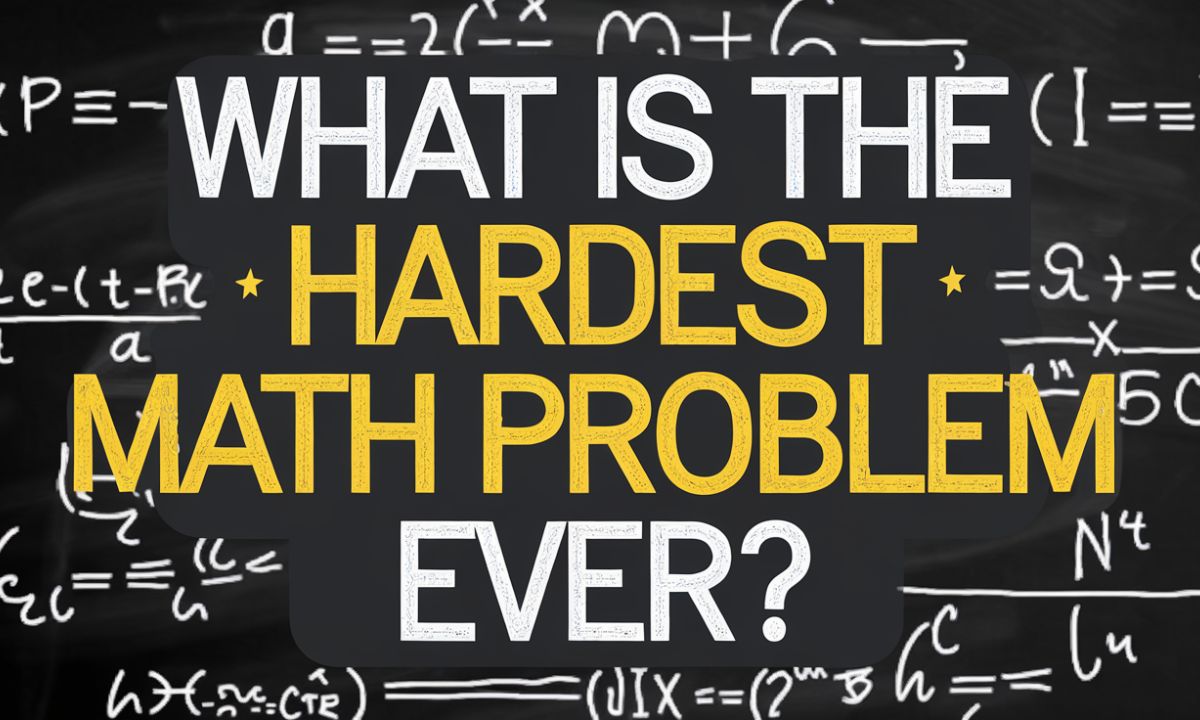Mathematics has long captivated human imagination with its blend of elegant simplicity and mind-bending complexity. But what truly makes a math problem the “hardest ever”? Let’s dive into this fascinating world where some of humanity’s brightest minds have spent decades – sometimes centuries – grappling with seemingly unsolvable puzzles.
The Nature of Mathematical Difficulty
What makes a math problem truly hard isn’t just its complexity – it’s often the deceptive simplicity of its statement combined with the extraordinary depth required to prove it. Take Fermat’s Last Theorem, for instance. A child can understand the statement: no three positive integers a, b, and c can satisfy the equation aⁿ + bⁿ = cⁿ for any integer n greater than 2. Yet this deceivingly simple statement took over three centuries and some of the most sophisticated mathematics ever developed to prove.
The Contenders for History’s Hardest Math Problems
The Riemann Hypothesis: The Prime Number Mystery
The Riemann Hypothesis stands as perhaps the most significant unsolved problem in pure mathematics. Proposed by Bernhard Riemann in 1859, it makes a precise statement about the distribution of prime numbers – those mysterious numbers that can only be divided by 1 and themselves.
Key Facts about the Riemann Hypothesis:
- Connects to the distribution of prime numbers
- Has implications for cryptography and internet security
- Carries a $1 million prize from the Clay Mathematics Institute
- Has resisted proof attempts for over 160 years
Dr. Marcus du Sautoy, a prominent mathematician, once said: “The Riemann Hypothesis is the Mount Everest of mathematics. It’s the one everyone would love to climb because it’s considered the biggest challenge of all.”
The P vs NP Problem: Computing’s Greatest Mystery
The P vs NP problem sits at the heart of computer science and mathematics. It asks whether every problem whose solution can be quickly verified by a computer can also be quickly solved by a computer. This seemingly abstract question has profound implications for everything from internet security to artificial intelligence.
Real-world implications of P vs NP:
- Cryptography and digital security
- Efficient route planning and logistics
- Protein folding in medical research
- Resource optimization
The Collatz Conjecture: Deceptive Simplicity
The Collatz Conjecture exemplifies how the simplest-looking problems can be the most maddening. Here’s the process:
- Start with any positive integer
- If it’s even, divide by 2
- If it’s odd, multiply by 3 and add 1
- Repeat
The conjecture states that this sequence always eventually reaches 1, no matter what number you start with. Despite its simple rules, no one has proved this works for all numbers.
Solved Giants: The Everests That Were Conquered
Fermat’s Last Theorem: A 358-Year Journey
Andrew Wiles’s 1995 proof of Fermat’s Last Theorem stands as one of mathematics’ greatest achievements. The journey to the solution revolutionized modern number theory and created entirely new branches of mathematics.
Timeline of the Solution:
| Year | Event |
| 1637 | Fermat writes his famous note |
| 1993 | Wiles announces first proof |
| 1994 | Error discovered in proof |
| 1995 | Final, correct proof published |
The Four Color Theorem: When Computers Changed Math
The Four Color Theorem states that any map can be colored using just four colors, with no adjacent regions sharing the same color. Its 1976 proof was revolutionary because it required computer assistance – marking a new era in mathematical proof.
Why These Problems Matter
The pursuit of these problems has led to countless unexpected discoveries and applications. Modern internet security relies on mathematical principles discovered while studying prime numbers. Weather prediction uses chaos theory developed while trying to solve seemingly unrelated mathematical problems.
Practical Applications:
- Quantum computing research
- Economic modeling
- Data encryption
- Artificial intelligence algorithms
Looking Forward: The Next Great Challenges
As we solve old problems, new ones emerge. Quantum computing poses fresh mathematical challenges. The mathematics of consciousness and artificial intelligence present new frontiers. The search for the “hardest math problem” continues to evolve.
Expert Perspective
Dr. Terence Tao, Fields Medal winner, offers this insight: “Mathematics is not about numbers, equations, computations, or algorithms: it is about understanding.”
Conclusion
The quest to solve the hardest math problems drives human innovation and understanding forward. These challenges remind us that mathematics isn’t just about finding answers – it’s about developing new ways of thinking and understanding our world.
[Note: Always verify specific mathematical concepts and claims with current academic sources, as this field continuously evolves.]

